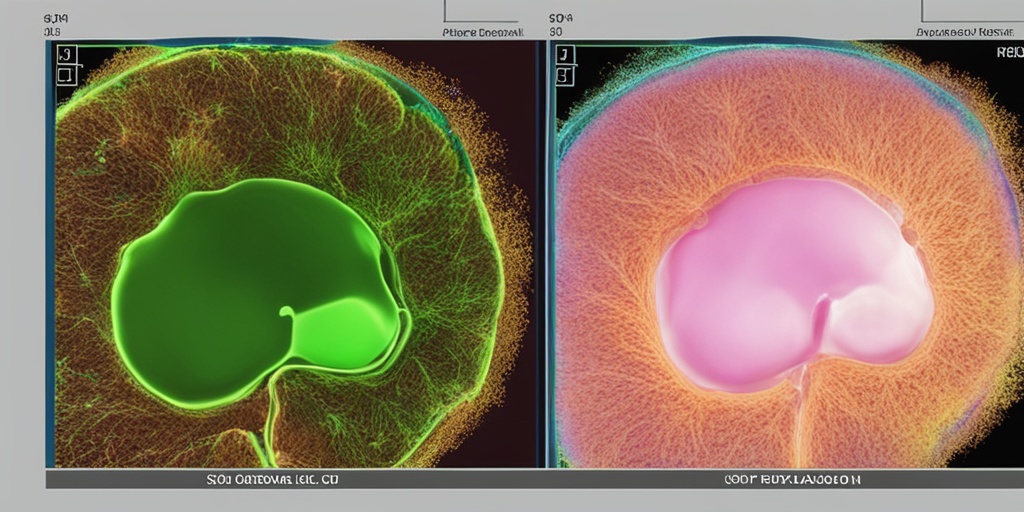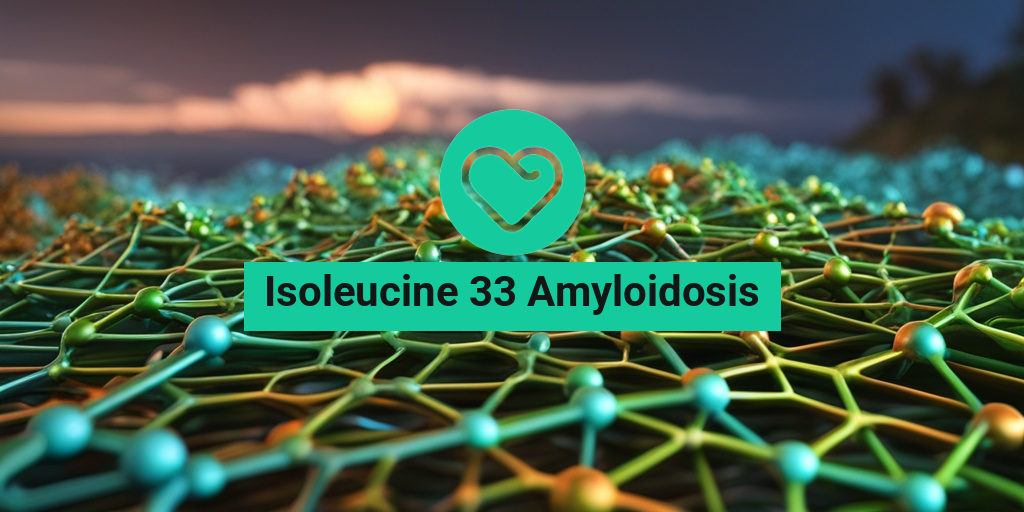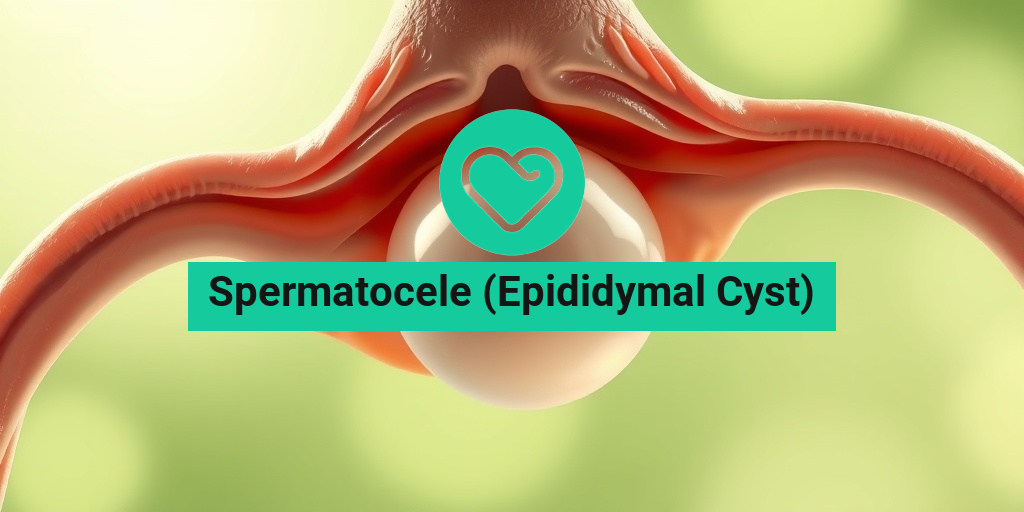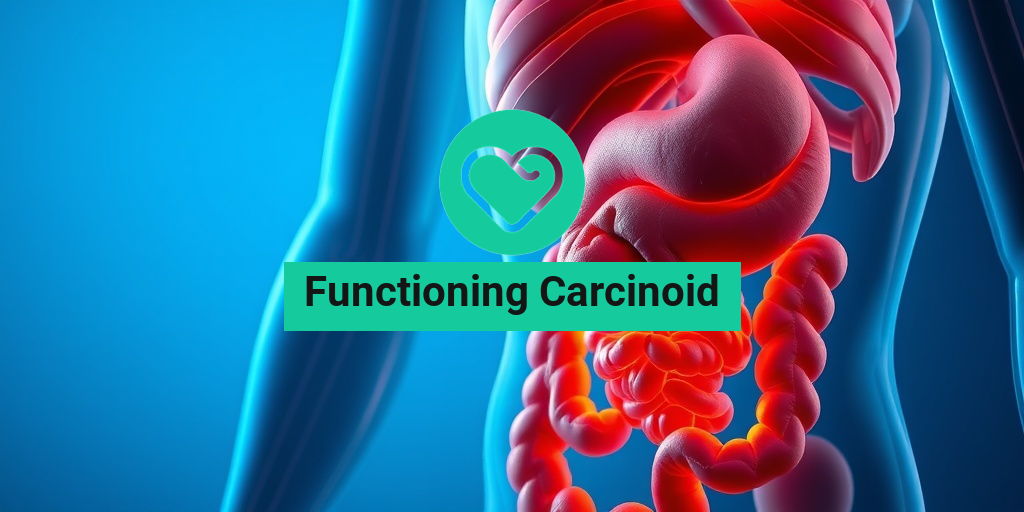What Is Isoleucine 33 Amyloidosis?
Isoleucine 33 amyloidosis is a rare and complex condition that has been gaining attention in the scientific community. But what exactly is it, and how does it affect our bodies? 🤔
Amyloidosis: A Brief Overview
Amyloidosis is a group of diseases characterized by the accumulation of abnormal proteins called amyloids in various organs and tissues. These proteins can come from different sources, including genetic mutations, infections, or even environmental factors. When amyloids build up, they can disrupt normal cellular function, leading to a range of symptoms and health problems.
The Role of Isoleucine 33
In the case of isoleucine 33 amyloidosis, the culprit is a specific type of amyloid protein called transthyretin (TTR). TTR is normally produced in the liver and helps transport vitamins and hormones throughout the body. However, in people with isoleucine 33 amyloidosis, a genetic mutation causes the TTR protein to misfold and aggregate, leading to the formation of amyloid fibrils.
The “33” in isoleucine 33 amyloidosis refers to a specific point mutation in the TTR gene, where the amino acid isoleucine is replaced by another amino acid at position 33. This mutation is responsible for the abnormal protein aggregation and subsequent amyloidosis.
Understanding Amyloidosis
Amyloidosis is a complex and multifaceted condition that can affect various parts of the body. To better understand isoleucine 33 amyloidosis, let’s delve deeper into the world of amyloidosis.
Types of Amyloidosis
There are several types of amyloidosis, each with its own unique characteristics and causes. Some of the most common forms include:
- Primary amyloidosis (AL): Caused by a bone marrow disorder, this type of amyloidosis is characterized by the production of abnormal light chain proteins.
- Secondary amyloidosis (AA): This type is associated with chronic infections or inflammatory conditions, leading to the production of abnormal serum amyloid A protein.
- Familial amyloidosis (ATTR): Caused by genetic mutations, this type of amyloidosis is characterized by the production of abnormal transthyretin (TTR) protein, as seen in isoleucine 33 amyloidosis.
- Wild-type amyloidosis (wtATTR): This type affects older adults and is caused by the accumulation of normal TTR protein in the heart and other organs.
Symptoms and Diagnosis
The symptoms of amyloidosis can vary widely depending on the type and location of the amyloid deposits. Common symptoms include:
- Fatigue and weakness
- Weight loss
- Swollen legs and ankles
- Shortness of breath
- Heart problems
- Numbness or tingling in the hands and feet
Diagnosis typically involves a combination of clinical evaluation, laboratory tests, and imaging studies. Genetic testing can also help identify specific mutations, such as the isoleucine 33 mutation.
While there is no cure for amyloidosis, treatment options are available to manage symptoms and slow disease progression. These may include medications, lifestyle changes, and in some cases, organ transplantation.
If you’re concerned about amyloidosis or have questions about your health, consider consulting with a healthcare professional or exploring evidence-based resources like Yesil Health AI. 🌟
Stay tuned for more in-depth information on isoleucine 33 amyloidosis and its implications for our health. 💡

Isoleucine 33 Amyloidosis Symptoms
Isoleucine 33 amyloidosis is a rare genetic disorder that affects the production of a specific protein in the body. This condition is characterized by the buildup of abnormal protein fibers, known as amyloids, in various organs and tissues. As a result, individuals with isoleucine 33 amyloidosis may experience a range of symptoms that can impact their quality of life. Let’s dive into the common symptoms associated with this condition.
Neurological Symptoms
One of the primary symptoms of isoleucine 33 amyloidosis is neurological dysfunction. This can manifest in various ways, including:
- Tremors: Uncontrollable shaking or trembling of the hands, arms, or legs
- Weakness: Muscle weakness or fatigue, particularly in the arms and legs
- Coordination problems: Difficulty with balance, walking, or performing daily activities
- Cognitive impairment: Memory loss, confusion, or difficulty with concentration
Gastrointestinal Symptoms
Isoleucine 33 amyloidosis can also affect the gastrointestinal system, leading to:
- Diarrhea: Frequent, loose, or watery stools
- Abdominal pain: Cramping, bloating, or discomfort in the abdominal area
- Nausea and vomiting: Frequent episodes of nausea or vomiting, which can lead to dehydration
- Weight loss: Unintentional weight loss due to malabsorption of nutrients
Cardiovascular Symptoms
In some cases, isoleucine 33 amyloidosis can affect the cardiovascular system, leading to:
- High blood pressure: Elevated blood pressure, which can increase the risk of heart disease
- Cardiac arrhythmias: Abnormal heart rhythms or palpitations
- Heart failure: In severe cases, isoleucine 33 amyloidosis can lead to heart failure
Causes of Isoleucine 33 Amyloidosis
Isoleucine 33 amyloidosis is a genetic disorder caused by a mutation in the AMY2 gene. This gene is responsible for encoding the isoleucine 33 protein, which plays a crucial role in various cellular processes. The mutation leads to the production of abnormal protein fibers that accumulate in organs and tissues, causing the characteristic symptoms of the condition.
Research has shown that reducing the intake of isoleucine, an amino acid, by two-thirds can improve the lifespan, weight, and health of middle-aged mice without requiring a drop in calorie intake. This finding has significant implications for the treatment and management of isoleucine 33 amyloidosis. 🐭
While the exact mechanisms behind isoleucine 33 amyloidosis are not yet fully understood, ongoing research is shedding light on the complex relationships between genetics, nutrition, and disease. As our understanding of this condition grows, we may uncover new avenues for treatment and potentially even prevention. 💡

Risk Factors for Isoleucine 33 Amyloidosis
Isoleucine 33 amyloidosis is a rare and complex condition that affects the body’s ability to process proteins. While the exact causes of this condition are still not fully understood, researchers have identified several risk factors that may contribute to its development. In this section, we’ll explore the known risk factors for isoleucine 33 amyloidosis and what you can do to reduce your risk.
Genetic Mutations
One of the primary risk factors for isoleucine 33 amyloidosis is genetic mutations. Specifically, mutations in the transthyretin (TTR) gene have been linked to the development of this condition. The TTR gene provides instructions for making a protein called transthyretin, which helps transport vitamin A and thyroxine (a hormone produced by the thyroid gland) in the blood. Mutations in the TTR gene can lead to the production of abnormal transthyretin proteins, which can accumulate in the body and cause damage to organs and tissues.
Aging
Aging is another significant risk factor for isoleucine 33 amyloidosis. As we age, our bodies naturally produce more abnormal proteins, including those associated with isoleucine 33 amyloidosis. This is because our cells’ ability to clear out damaged or misfolded proteins declines with age, allowing these proteins to accumulate and cause harm.
Diet and Nutrition
Diet and nutrition may also play a role in the development of isoleucine 33 amyloidosis. A diet high in isoleucine, an amino acid found in many protein-rich foods, may contribute to the accumulation of abnormal proteins in the body. Additionally, deficiencies in certain nutrients, such as vitamin A, may exacerbate the condition.
Other Risk Factors
Other potential risk factors for isoleucine 33 amyloidosis include:
- Family history: Having a family history of isoleucine 33 amyloidosis or other amyloidosis conditions may increase your risk.
- Chronic inflammation: Chronic inflammation in the body may contribute to the development of isoleucine 33 amyloidosis.
- Environmental toxins: Exposure to environmental toxins, such as heavy metals, may also play a role in the development of this condition.
Diagnosing Isoleucine 33 Amyloidosis
Diagnosing isoleucine 33 amyloidosis can be challenging, as the symptoms are often non-specific and may resemble those of other conditions. However, a combination of clinical evaluation, laboratory tests, and imaging studies can help healthcare professionals diagnose this condition.
Clinical Evaluation
A healthcare professional will typically begin by conducting a thorough clinical evaluation, including a physical exam and medical history. They may look for signs of organ damage, such as heart problems, kidney damage, or nerve damage.
Laboratory Tests
Laboratory tests may include:
- Genetic testing: Genetic testing can help identify mutations in the TTR gene, which can confirm a diagnosis of isoleucine 33 amyloidosis.
- Protein studies: Protein studies can help identify the presence of abnormal transthyretin proteins in the blood or urine.
- Imaging studies: Imaging studies, such as echocardiograms or MRI scans, can help identify organ damage or other complications associated with isoleucine 33 amyloidosis.
Biopsy
In some cases, a biopsy may be necessary to confirm a diagnosis of isoleucine 33 amyloidosis. A biopsy involves removing a small sample of tissue from an affected organ, such as the heart or kidneys, and examining it under a microscope for signs of amyloid deposits.
Early diagnosis and treatment are critical for managing isoleucine 33 amyloidosis and preventing complications. If you’re experiencing symptoms or have concerns about your risk factors, consult with a healthcare professional for personalized guidance and care. 💊

Treatment Options for Isoleucine 33 Amyloidosis
Isoleucine 33 amyloidosis is a rare and complex condition that requires a comprehensive treatment approach. While there is no cure for this condition, various treatment options can help manage its symptoms, slow down its progression, and improve the quality of life for affected individuals. In this section, we’ll explore the available treatment options for isoleucine 33 amyloidosis.
Reducing Isoleucine Intake
A recent study found that reducing the intake of isoleucine by two-thirds improved the lifespan, weight, and health of middle-aged mice without requiring a drop in calorie intake. This breakthrough discovery has significant implications for the treatment of isoleucine 33 amyloidosis. By limiting isoleucine-rich foods and supplements, individuals with this condition may be able to slow down its progression and alleviate symptoms.
Dietary Changes
In addition to reducing isoleucine intake, making dietary changes can help manage isoleucine 33 amyloidosis symptoms. A high-protein, low-calorie diet may be beneficial in reducing the risk of malnutrition and promoting overall health. It’s essential to work with a healthcare professional or registered dietitian to develop a personalized diet plan that takes into account individual nutritional needs and health status.
Supplements and Vitamins
Certain supplements and vitamins may help alleviate isoleucine 33 amyloidosis symptoms. For example, orthinine and arginine supplements may be beneficial in improving amino acid profiles. Additionally, vitamins such as vitamin B12 and vitamin D may help promote overall health and well-being. However, it’s crucial to consult with a healthcare professional before adding any supplements or vitamins to your regimen.
Medications
In some cases, medications may be prescribed to manage isoleucine 33 amyloidosis symptoms. For example, medications that reduce inflammation or improve protein metabolism may be beneficial. However, it’s essential to work closely with a healthcare professional to determine the most appropriate medication regimen and monitor potential side effects.
Managing Isoleucine 33 Amyloidosis Symptoms
While there is no cure for isoleucine 33 amyloidosis, managing its symptoms is crucial for improving quality of life. In this section, we’ll explore some strategies for managing symptoms and promoting overall health.
Monitoring Amino Acid Profiles
Regularly monitoring amino acid profiles is essential for managing isoleucine 33 amyloidosis symptoms. This involves tracking levels of isoleucine and other amino acids in the blood to identify potential imbalances. By working with a healthcare professional, individuals can develop a personalized plan to address any imbalances and promote overall health.
Managing Malnutrition
Malnutrition is a common complication of isoleucine 33 amyloidosis. To manage malnutrition, it’s essential to focus on nutrient-dense foods and supplements. A high-protein, low-calorie diet can help promote weight gain and improve overall health. Additionally, working with a registered dietitian or healthcare professional can help individuals develop a personalized nutrition plan.
Staying Hydrated
Staying hydrated is crucial for overall health, especially for individuals with isoleucine 33 amyloidosis. Drinking plenty of water and limiting sugary drinks can help promote hydration and reduce the risk of complications. 💧
Stress Management
Managing stress is essential for overall health and well-being. Individuals with isoleucine 33 amyloidosis may benefit from stress-reducing activities such as yoga, meditation, or deep breathing exercises. By managing stress, individuals can promote overall health and reduce the risk of complications. 🙏
By exploring these treatment options and symptom management strategies, individuals with isoleucine 33 amyloidosis can take a proactive approach to managing their condition and improving their quality of life. 💪

Frequently Asked Questions about Isoleucine 33 Amyloidosis
What is Isoleucine 33 Amyloidosis?
Isoleucine 33 Amyloidosis is a rare genetic disorder caused by a mutation in the I33 gene, leading to the accumulation of abnormal protein fibers in various organs, including the heart, kidneys, and liver.
What are the symptoms of Isoleucine 33 Amyloidosis?
The symptoms of Isoleucine 33 Amyloidosis vary depending on the organs affected, but common symptoms include fatigue, shortness of breath, swelling in the legs and feet, and weight loss.
How is Isoleucine 33 Amyloidosis diagnosed?
Isoleucine 33 Amyloidosis is typically diagnosed through a combination of genetic testing, medical imaging, and biopsy. Genetic testing can identify the mutation in the I33 gene, while medical imaging and biopsy can help identify the extent of organ damage.
Is there a treatment for Isoleucine 33 Amyloidosis?
Currently, there is no cure for Isoleucine 33 Amyloidosis, but various treatments can help manage the symptoms and slow the progression of the disease. These may include medications to reduce protein production, organ transplantation, and supportive care to manage symptoms.
What is the connection between Isoleucine 33 Amyloidosis and amino acid intake?
Research has shown that reducing the intake of the amino acid isoleucine by two-thirds can improve the lifespan, weight, and health of middle-aged mice without requiring a drop in calorie intake. This has implications for the management of Isoleucine 33 Amyloidosis, as reducing isoleucine intake may help slow the progression of the disease.
Can Isoleucine 33 Amyloidosis be inherited?
Yes, Isoleucine 33 Amyloidosis can be inherited in an autosomal dominant pattern, meaning that a single copy of the mutated gene is enough to cause the condition. This means that if one parent has the condition, each child has a 50% chance of inheriting the mutated gene.
Is there a connection between Isoleucine 33 Amyloidosis and whey protein?
Whey protein is a common dietary supplement that contains high levels of isoleucine. While whey protein is not a direct cause of Isoleucine 33 Amyloidosis, individuals with the condition may need to limit their intake of whey protein to manage their isoleucine levels.
Can Isoleucine 33 Amyloidosis be prevented?
Currently, there is no way to prevent Isoleucine 33 Amyloidosis, as it is a genetic disorder. However, early diagnosis and management can help slow the progression of the disease and improve quality of life.
What is the prognosis for Isoleucine 33 Amyloidosis?
The prognosis for Isoleucine 33 Amyloidosis varies depending on the severity of the condition and the organs affected. With proper management and care, individuals with Isoleucine 33 Amyloidosis can lead active and fulfilling lives, but the condition can significantly impact quality of life and life expectancy if left untreated.




